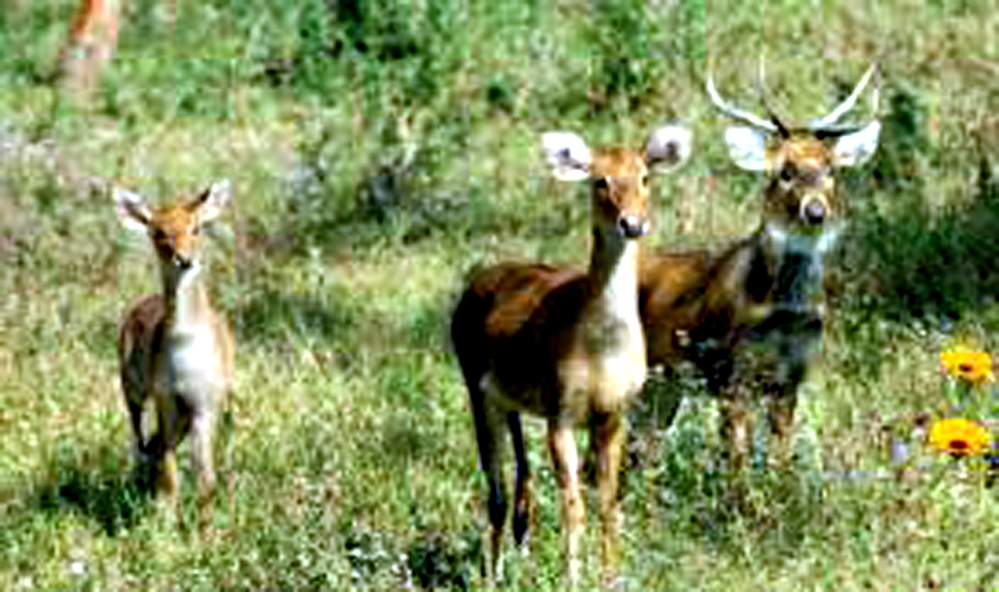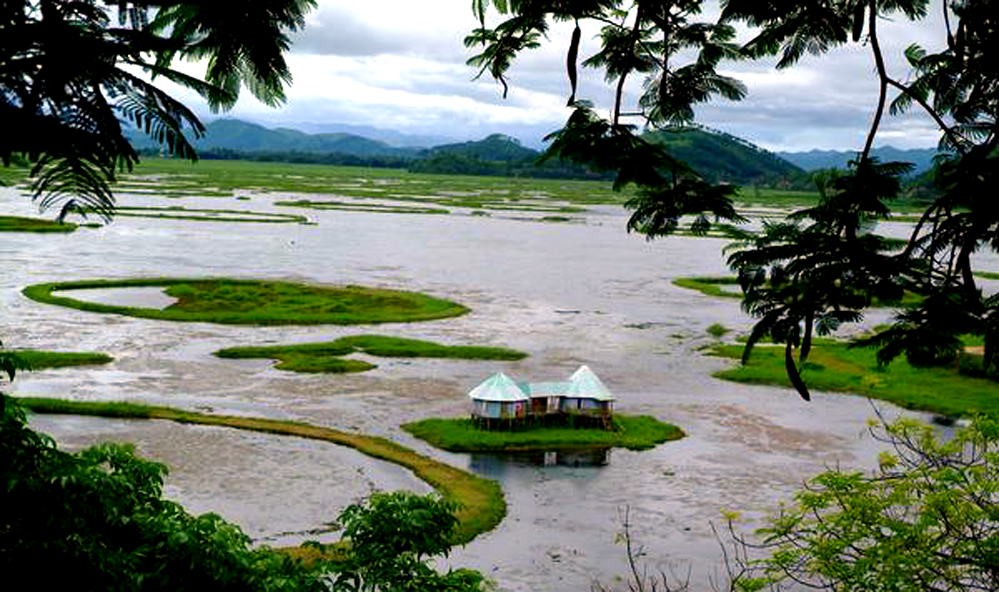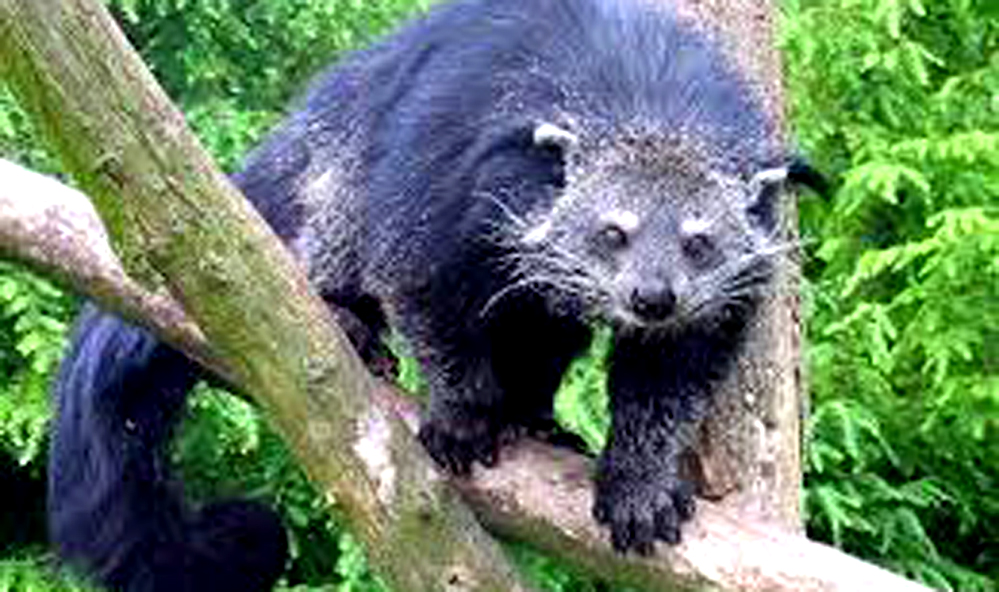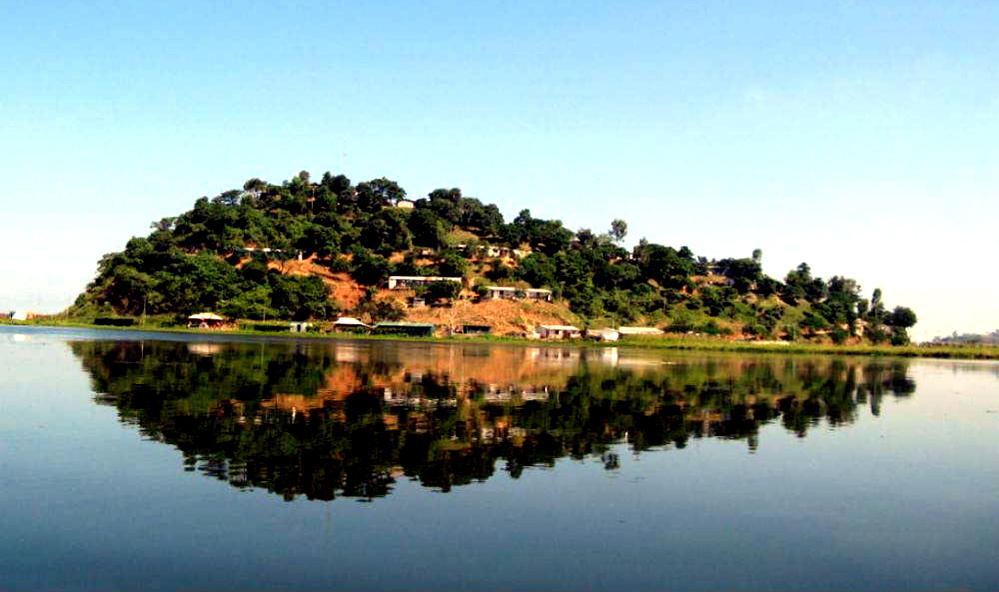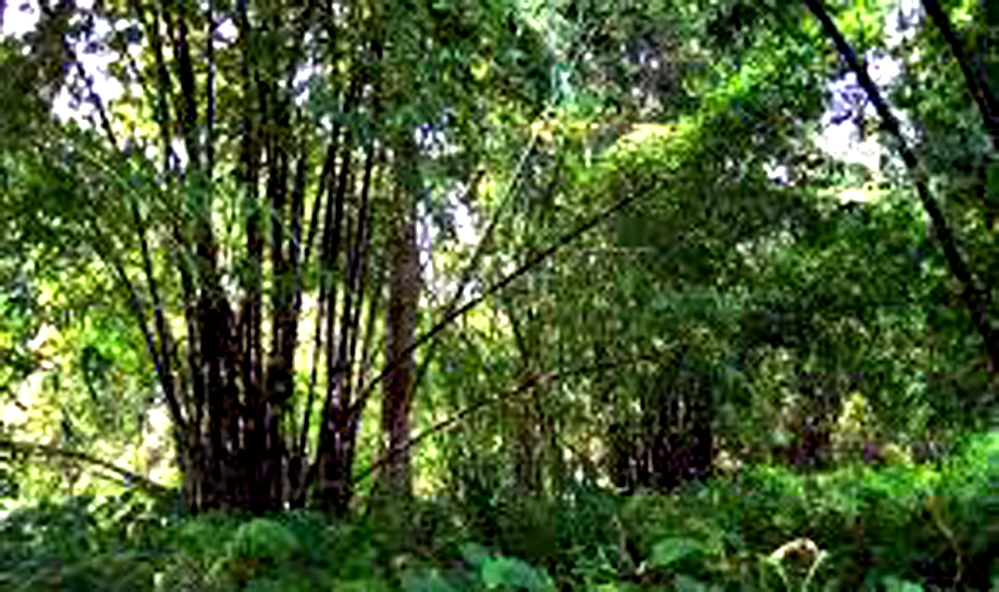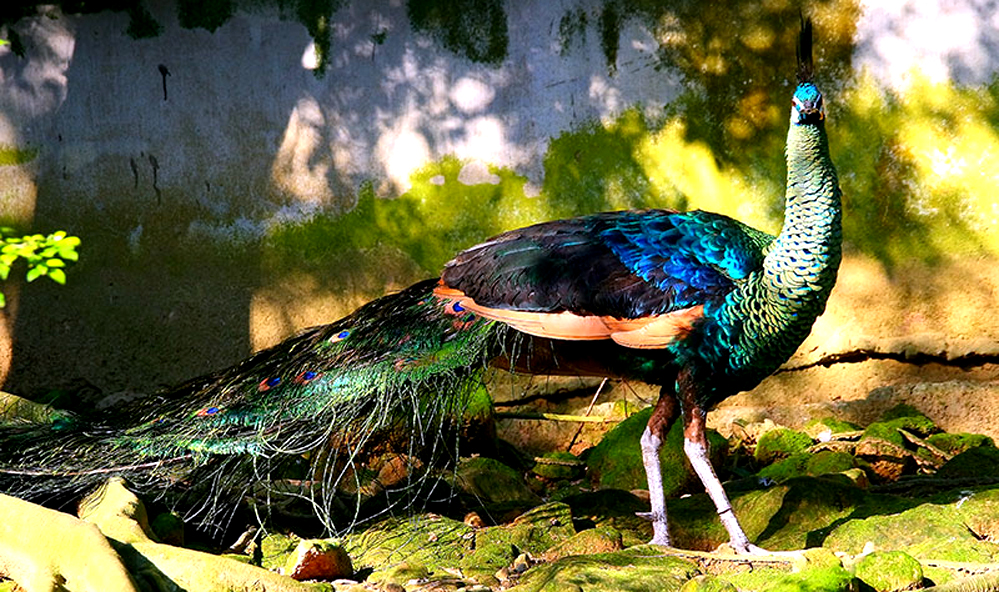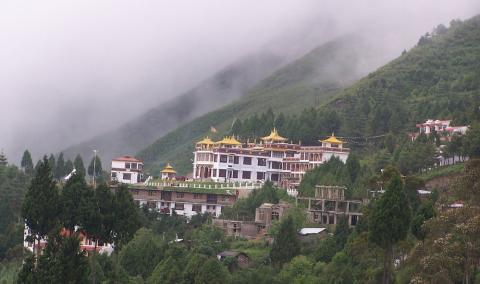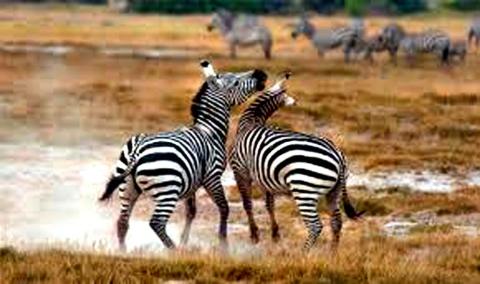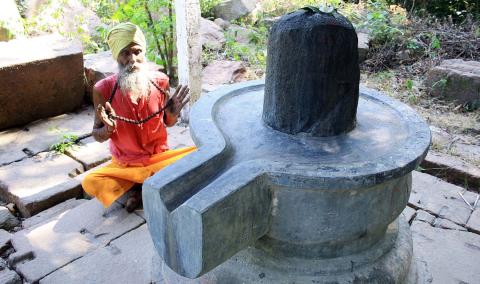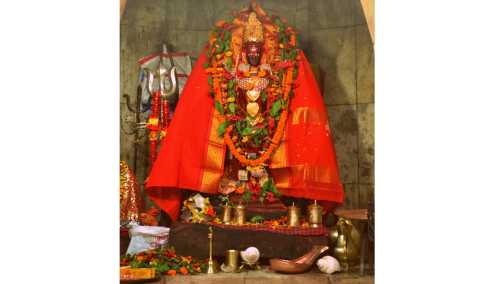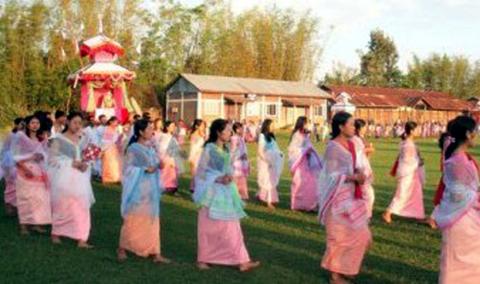The Keibul Lamjao National Park is located in the Bishnupur District and covers an area of about 40 square kilometers. The park stands tall for being the only Floating National Park of the world and is the last natural habitat of the critically endangered Sangai, a Brow-antlered deer. Due to conservation efforts the population of Sangai deer has increased over the years from less than 100 in 2008 to a whooping 204 in 2013.
It was declared a National Park way back on March 28, 1977. It is a semi evergreen forest comprising of aquatic, wetland and a terrestrial environment. The park has numerous endangered animal species along with a diverse population of fauna including the hog deer, viper, krait, cobra, python, Sangai, Indian civet cat and common otter.
The flora mostly comprise aquatic plants such as Zizania latifolia, S. Bengalensis, Eiranthus procerus, Cynodon dactylon, Saccharum munja and Alpinia galanga. Among other plants, there are Eichornia crossipes, Hedychium coronarium, Nelumbo nucifera, Phragmites karka and Dioschoria bulbifera.
Keibul Lamjao consists of the unique 'phumdi' or floating marshes or floating biomass. Eighty per cent of the flora is submerged and the vegetation forms a 90-120 centimeter thick cover on the water surface. About half a century ago, the predominant plants used to be tou (45 per cent), singut (25 per cent) and khoimom (15 per cent). But the composition of the vegetation has undergone rapid changes and the plant cover, at present, is estimated to comprise of equal proportions of hoop Leersia hexandra and sing kambong Zizania latifolia, a protein-rich plant, often used as food (about 24 per cent). Tou Phragmites karka now comprises only about 14 per cent and wana manbi Cepithipedium spp. constitutes another 13.3 per cent. Khoimom Saccharum munja and singut Narenga porphyrochroms are found in even lower proportions of 5.6 per cent and 3.6 per cent respectively.
A particular variety of wild rice grows in the area and some other endemic plants are present. Scanty growth of some species like hunding Carex spp., yawachaning Coix lecryma-jobi and lilhar Polygonum perfoliatum are also observed. Brow Antlered Deer(Cervus eldi eldi - Mecelland) locally known as Sangai is the rarest mammals and most beautiful deer in the world. A small herd of 14 animals was surviving in the present park area during 1975.
With the declaration of the area as National Park and subsequent protection and conservation measures taken up by the Department, the population has increased considerably. During the March 1995, 152 Sangai - 58 stags (male), 69 hinds (female) and 25 fawn were surviving along with 118 Hog deer and 100 Wild boar in the Park.
How to reach
By Air
The Imphal Tulihal International Airport has flight services to all major destinations of the country.
By Train
The closest junction to Imphal is the Dimapur railway station which is located at a distance of 215 kilometers from Manipur
By Road
Guwahati to Imphal; (490.9 km) via NH 36 & NH39. Imphal to Keibul Lamjao National Park (48 kms)
Best time to visit
October to April.
